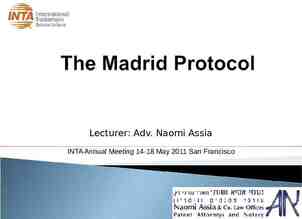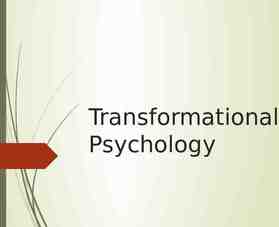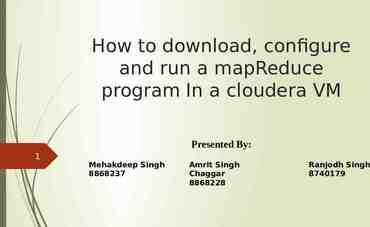Business Information Systems Chapters 10 & 11
43 Slides1.03 MB

Business Information Systems Chapters 10 & 11

Decision Making and Problem Solving

Figure 10.1

Programmed versus Nonprogrammed Decisions Programmed decisions Structured situations with well defined relationships Quantifiable Management information system Chapter 10 Principles of Information Systems, Fifth Edition Slide 4

Programmed versus Nonprogrammed Decisions Nonprogrammed decisions Ill-structured situations with vague or changing relationships between variables Not easily quantifiable in advance Decision support systems Chapter 10 Principles of Information Systems, Fifth Edition Slide 5

Problem Solving Approaches Optimization: find the best solution Satisficing: find a good solution Heuristics: use rules of thumb Chapter 10 Principles of Information Systems, Fifth Edition Slide 6

Figure 10.2

An Overview of Management Information Systems

Figure 10.3

Figure 10.4

Figure 10.4 cont’d

Characteristics of an MIS Fixed format, standard reports Hard-copy or soft-copy reports Uses internal data User-developed reports Users must request formal reports from IS department Chapter 10 Principles of Information Systems, Fifth Edition Slide 12

Functional Aspects of the MIS

Functional MIS Systems Manufacturing Marketing Human Resources Accounting GIS Chapter 10 Principles of Information Systems, Fifth Edition Slide 14

An Overview of Decision Support Systems

Characteristics of Decision Support Systems Handle lots of data from various sources Support drill down analysis Complex analysis, statistics, and forecasting Optimization, satisficing, heuristics Simulation What-if analysis Goal-seeking analysis Chapter 10 Principles of Information Systems, Fifth Edition Slide 16

Figure 10.14

Examples of a DSS Meal Planning Web-Based Decision Support Chapter 10 Principles of Information Systems, Fifth Edition Slide 18

Components of a DSS

Figure 10.16

The Model Base Financial models Cash flow Internal rate of return Statistical analysis models Averages, standard deviations Correlations Regression analysis Graphical models Project management models Chapter 10 Principles of Information Systems, Fifth Edition Slide 21

Group Decision Support Systems

Figure 10.17

Characteristics of a GDSS Ease of use Flexibility Decision-making support Anonymous input Reduction of negative group behavior Parallel communication Automated record keeping Chapter 10 Principles of Information Systems, Fifth Edition Slide 24

Figure 10.18

Figure 10.19

Executive Support Systems

Executive Support Systems (ESS) in Perspective Tailored to individual executives Easy to use Drill down capabilities Access to external data Can help when uncertainty is high Chapter 10 Principles of Information Systems, Fifth Edition Slide 28

An Overview of Artificial Intelligence

The Nature of Intelligence Learn from experience & apply the knowledge Handle complex situations Solve problems when important information is missing Determine what is important Chapter 10 Principles of Information Systems, Fifth Edition Slide 30

The Nature of Intelligence React quickly & correctly to new situations Understand visual images Process & manipulate symbols Be creative & imaginative Use heuristics Chapter 10 Principles of Information Systems, Fifth Edition Slide 31

Figure 11.1

Table 11.1

The Major Branches of Artificial Intelligence Vision systems Natural Language Processing Learning systems Neural networks Robotics Chapter 10 Principles of Information Systems, Fifth Edition Slide 34

An Overview of Expert Systems

Characteristics of an Expert System Can explain reasoning Can provide portable knowledge Can display “intelligent” behavior Can draw conclusions from complex relationships Can deal with uncertainty Chapter 10 Principles of Information Systems, Fifth Edition Slide 36

Limitations of Expert Systems Limited to narrow problems Hard to use Cannot easily deal with “mixed” knowledge Cannot refine own knowledge base Hard to maintain Possible high development costs Raise legal & ethical concerns Chapter 10 Principles of Information Systems, Fifth Edition Slide 37

When to Use Expert Systems High payoff Preserve scarce expertise Distribute expertise Provide more consistency than humans Faster solutions than humans Training expertise Chapter 10 Principles of Information Systems, Fifth Edition Slide 38

Fig 11.7

Components of Expert Systems The Knowledge Base Rules Cases Fuzzy Logic Inference Engines Backward chaining Forward chaining Chapter 10 Principles of Information Systems, Fifth Edition Slide 40

Fig 11.12

Advantages of Expert Systems Shells and Products Easy to develop & modify Use of satisficing Use of heuristics Development by knowledge engineers & users Chapter 10 Principles of Information Systems, Fifth Edition Slide 42

Applications of Expert Systems & AI Credit granting Shipping Information management & retrieval Embedded systems Help desks & assistance Medical diagnosis Whale Identification Chapter 10 Principles of Information Systems, Fifth Edition Slide 43






